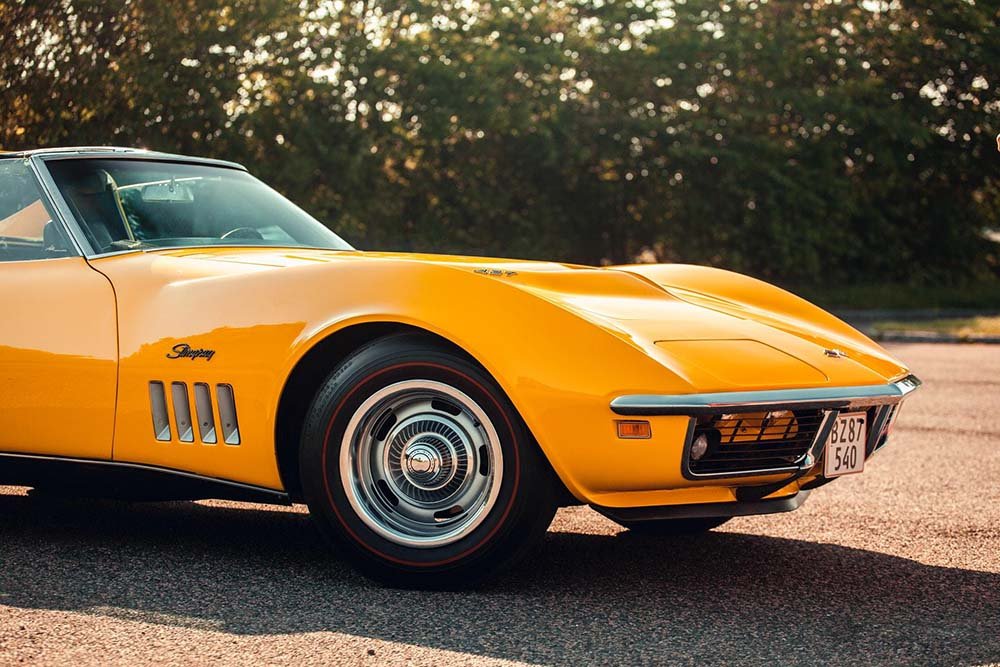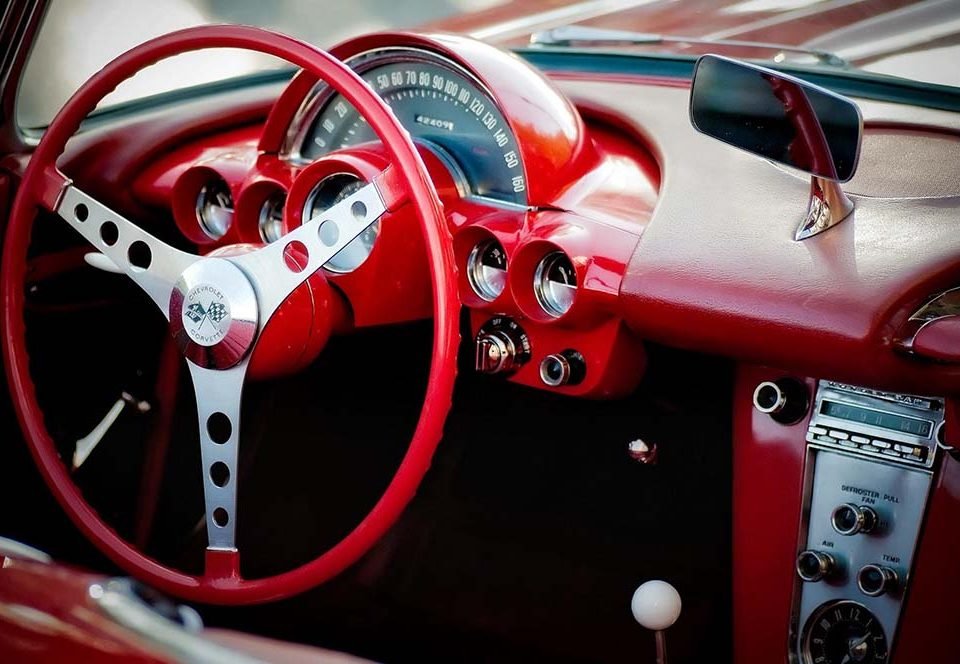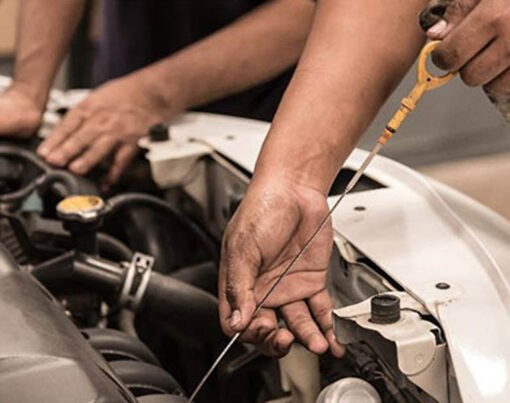If someone asked you to name some of the most iconic cars off the top of your head, it’s likely that you’d think of the Chevrolet Corvette.
The Corvette is a sleek and dynamic car beloved by many sports car fanatics.
However, it’s not uncommon to worry about the insurance rates of a Chevrolet Corvette.
Let’s take a look at Chevy’s history and how they came to create the iconic Corvette model, as well as the costs of owning such a vehicle.
Table of Contents
The Beginning of Chevrolet: Innovating Luxury
The Chevrolet Motor Company of Michigan was incorporated on November 3, 1911.
The early Classic Six models produced from 1912 to 1914 were practically identical, as the production costs in 1912 were pretty expensive for the time.
In 1914, the famous and well-known “bow tie” logo debuted. The earlier car models were for tours only, but consumers were still interested in the vehicles’ styles.
Over the next couple of years, their sales were skyrocketing, especially as automobile technology was evolving as things like electric starters and interior lights were invented.
Chevy Introduces the V8 and Chevrolet Truck
From 1916 to 1917, the number of units manufactured went from 70,000 units to 125,882 units.
Also, in 1917, the first Chevrolet V8 engine was introduced in their D-series of vehicles. Then, the very first Chevrolet truck models were introduced in 1918.
With all these new creations, the early 1920s were successful for Chevrolet. By 1922, they realized they needed to open more manufacturing plants to keep up with consumer demand.
Unsurprisingly, the stock market crash and the Great Depression greatly impacted the company.
The Death of Louis Chevrolet & Preparing for War
Fast forward to June 6, 1941. One of Chevrolet’s co-founders, Louis Chevrolet, passed away on this day.
Between the war in Europe and Pearl Harbor, the vehicles manufactured by Chevrolet and the rest of the automotive industry went from civilian-focused to military-focused.
Despite implementing new features such as the wrap-around windshield, Chevrolet struggled during the 1950s.
This period of financial hardship sparked the idea and creation of the iconic Corvette.

The First Corvette Models
The first model of the Corvette was the 1953 two-seater sports car with a fiberglass body, which was shown off at the 1953 General Motors Motorama Show.
Chevy’s plan for their sports car model was for it to appear distinctly American, unlike the British sports cars that were more common at the time.
When the production models of the vehicle were available in June of that year, it was well received. However, only 300 units were produced in that first year of production.
The First Generation of Corvette & Increasing Horsepower
This first generation of Corvette was known as C1s and was produced from 1953 to 1962.
When comparing the 1953 and 1962 models, the biggest difference is mostly in performance.
The first model was not very powerful, with only 150 horsepower. It was much slower than other sports cars at the time, as it took 11.5 seconds to get up to 60 miles per hour.
By 1962, however, the Corvette’s horsepower was much higher: The 1962 model could now achieve 360 horsepower.
By this time, the model had also seen cosmetic changes, such as interior adjustments to the location of the tachometer and a new dual-headlight design.
The Second-Generation Corvette: The Sting Ray Model
The second generation of Corvette ran from 1963 to 1967. The beginning of this generation saw the release of a brand new model called the Sting Ray.
The appearance was inspired by two other General Motors projects: Bill Mitchell’s racing Sting Ray and the Q-Corvette.
Here are some of the changes that came during the second generation of Corvette:
- The 1963 model was smaller than the first generation, but the body was still made of fiberglass.
- The first model of Sting Ray had an option for an automatic transmission.
- In 1965, Chevrolet was facing backlash from their use of drum brakes, which were used in the Z06 package of the 1963 Corvette. Therefore, they changed the style of brakes for the 1965 Sting Ray and equipped it with a more powerful V-8 engine.
- 1966 and 1967 saw even more changes in horsepower and torque due to more powerful engines. By this time, the 1967 Corvette could reach up to 435 horsepower.
Not much had changed visually in the second generation. Rather, Chevrolet stepped up the horsepower since they knew that other sports cars had much more than them at the time.
Major Changes Throughout Corvette History
The third generation of the Corvette completely changed the body and interior of the vehicle.
They needed to accommodate the regular low-lead fuel in 1971, so they lowered the engine compression ratios to lower power ratings.
The car’s style did not change much until 1978 for Corvette’s 25th anniversary. This anniversary introduced the fastback rear window and an updated interior.
The Fifth-Generation Corvette: The Most Extreme Design Change
The fifth generation, which occurred from 1997 to 2004, was the most extreme design change since the car’s debut in 1953.
Some changes included active handling, decreased weight, and 50/50 weight distribution.
During the most recent generation, which started in 2020, Chevrolet made the controversial choice to move the engine from the front to the middle.
Insurance Advice for Corvette Owners
The one downside of owning a sports car is that the insurance is often much more expensive.
This is because of crash rate statistics that say sports cars are more dangerous than most other cars, as well as the price of the vehicle’s parts.
However, there are some safety features that Corvettes have that can lower your insurance premium, including:
- Front and side airbags
- Rear park assist
- OnStar
- All-speed traction control
- Teen driving technology
- Active handling stability control
In general, you could practice some of the techniques that can help anyone lower their insurance premium, such as shopping around, going with safe driver discounts, and more.
Since your Corvette is expensive, it’s likely that you will want a policy with higher coverage in the case of repairs.

Luke Williams writes and researches for the car insurance comparison site, QuoteInspector.com. His passions include insurance and the history of today’s most famous sports cars.










